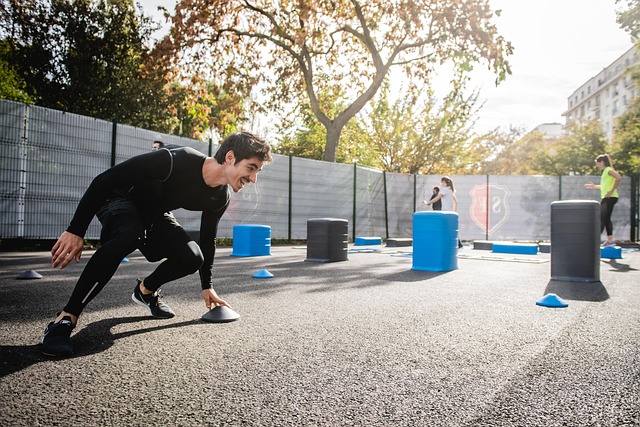In today’s fast-paced world, staying consistent with a workout routine can be challenging. That’s where a daily fitness planner becomes a game-changer. Whether you’re just starting your fitness journey or are a seasoned athlete, having a dedicated planner helps you stay organized, motivated, and aligned with your goals. A daily fitness planner isn’t just about scheduling workouts—it’s a powerful tool for managing time, tracking progress, and building habits that lead to lasting change.
Let’s dive into how a daily fitness planner can transform your lifestyle and how you can make the most of this tool for optimal physical and mental well-being.
Why You Need a Daily Fitness Planner
A daily fitness planner acts as your personal accountability partner. It’s more than just a notepad—it’s your silent coach, helping you show up, put in the work, and track your journey. Here’s why it’s essential:
1. Keeps You Consistent
Consistency is the key to any fitness transformation. A daily fitness planner helps you track your routines so you never have to guess what to do next. When your workouts are already planned, you’re less likely to skip them.
2. Helps Set Clear Goals
A vague goal like “get fit” won’t take you far. With a daily fitness planner, you can break that broad objective into measurable steps: workout frequency, target weight, weekly cardio minutes, or daily calorie intake.
3. Tracks Your Progress
You might not notice your strength increasing or waist shrinking right away—but your planner will. Use it to monitor reps, sets, body measurements, and endurance levels. This way, you’re not just guessing—you’re growing.
4. Builds Motivation
Every ticked box, completed workout, or meal logged brings a sense of accomplishment. Your daily fitness planner provides a visual record of your dedication, reminding you how far you’ve come and pushing you to keep going.
How to Use a Daily Fitness Planner Effectively
It’s not just about owning a planner—it’s about using it the right way. Think of your daily fitness planner as a compass for your wellness goals.
1. Schedule Your Workouts
Don’t leave your workouts to chance. Write them down like appointments—date, time, location, and duration. Committing to a plan increases the chances of follow-through.
2. Plan Your Meals
Nutrition is 70% of the equation. Your daily fitness planner should include a section for meals, snacks, water intake, and supplements. Whether you follow keto, vegan, or balanced macros, recording your diet helps you stay on track.
3. Log Your Mood and Energy
How you feel physically and emotionally affects your performance. Noting your energy levels, mood, or stress before and after workouts gives you insight into your body’s signals and recovery needs.
4. Reflect and Adjust Weekly
Take time once a week to assess your progress. What worked? What didn’t? Adjust your plan based on your reflections and keep evolving.
Key Features of an Ideal Daily Fitness Planner
A great daily fitness planner combines structure and flexibility. Whether you buy one or design your own, make sure it includes these elements:
Workout Log Section
Include:
-
Exercise name
-
Duration or sets/reps
-
Intensity
-
Equipment used
-
Rest time
-
Notes for improvement
Nutrition Tracker
A built-in food diary helps you:
-
Track meals and snacks
-
Calculate calories or macros
-
Monitor water intake
-
Note cravings or deficiencies
Goal-Setting Pages
Set SMART goals—Specific, Measurable, Achievable, Relevant, Time-bound. Write both short-term (weekly) and long-term (monthly or quarterly) goals to maintain direction.
Progress Pages
Use graphs or charts to track:
-
Weight changes
-
Inches lost/gained
-
PRs (personal records)
-
Body fat percentage
-
Step count
Reflection Prompts
Daily gratitude, inspirational quotes, and wellness reflections help you build a positive mindset—an often overlooked aspect of fitness.
The Psychology Behind a Daily Fitness Planner
Writing things down goes beyond organizing thoughts. It actually changes behavior. Here’s how:
1. Reinforces Accountability
You’re more likely to complete a task if it’s written down. Your daily fitness planner turns intention into action by making it real.
2. Enhances Focus and Clarity
By decluttering your mind, you become more focused on your routine. This structure allows for better execution and fewer excuses.
3. Creates Habit Stacking
Link planning with other habits—log workouts after breakfast or fill in meals before bedtime. This strengthens your routine and makes it effortless over time.
Creating Your Own Daily Fitness Planner
Prefer to customize your own planner? No problem. Creating a personalized daily fitness planner ensures it meets your unique goals and habits.
Choose a Format: Digital or Paper
Both have their pros. Digital planners offer convenience and automation, while physical planners encourage mindfulness and reduce screen fatigue.
Design Your Layout
Every daily fitness planner should include:
-
Daily schedule
-
Workout of the day
-
Mood tracker
-
Sleep log
-
Water intake tracker
-
Step count
-
Meal log
-
Motivation or affirmation of the day
Add Custom Touches
Color-code your entries, use motivational stickers, or create weekly challenges. Personalization increases emotional connection and enjoyment.
Digital Tools vs. Traditional Journals
Still unsure which to choose? Compare the options below:
Pros of Digital Planners
-
Sync across devices
-
Reminders and notifications
-
Easily shareable with coaches
-
Quick data analysis
Pros of Traditional Planners
-
Promotes mindfulness
-
Reduces screen fatigue
-
Helps with memory retention
-
Creative freedom with journaling
There’s no wrong choice—just the one you’ll use consistently.
Success Stories Using a Daily Fitness Planner
Real people. Real results.
Amanda’s 30-Pound Weight Loss
After years of inconsistency, Amanda began using a daily fitness planner. By writing down workouts and meals daily, she gained clarity and accountability—leading to a 30-pound loss in just 6 months.
Jake’s Muscle Gain Journey
Jake was already lifting but lacked structure. Once he started tracking his lifts, calories, and progress in a daily fitness planner, he added 8 pounds of lean muscle in 90 days.
Priya’s Stress-Free Routine
Struggling with anxiety, Priya used a daily fitness planner not just for workouts but for meditation, journaling, and gratitude. The consistent habit reduced her stress and improved her physical performance too.
Benefits of a Daily Fitness Planner Beyond the Gym
The beauty of a daily fitness planner is that its benefits spill over into other parts of your life:
1. Better Sleep Patterns
Tracking sleep helps you recognize patterns and adjust bedtime habits to improve quality rest.
2. Improved Mental Health
Logging moods and gratitude encourages self-awareness, reduces anxiety, and builds emotional resilience.
3. Increased Productivity
The structure from planning workouts often leads to better time management in other areas like work or school.
Mistakes to Avoid When Using a Daily Fitness Planner
Awareness leads to better results. Avoid these common pitfalls:
Being Too Rigid
Life happens. If you miss a day or switch up a plan, that’s okay. Your daily fitness planner should guide—not control—you.
Skipping Entries
Missing logs for too long makes it harder to see trends. Even jotting down “rest day” keeps the momentum going.
Ignoring Emotional Wellness
Don’t focus only on physical stats. Include how you feel emotionally—it’s just as important for overall well-being.
Tips for Making the Most of Your Daily Fitness Planner
Maximize the effectiveness of your daily fitness planner with these tips:
-
Set a reminder to fill it out daily (same time every day)
-
Keep it accessible (desk, gym bag, or bedside)
-
Reward yourself for consistency (small treats or new gear)
-
Review and revise goals monthly
-
Use colors, symbols, or doodles to personalize your planner
Conclusion
A daily fitness planner is more than a notebook—it’s your accountability system, your motivator, your tracker, and your wellness journal. By using one consistently, you take control of your health journey with clarity and purpose. Whether your goal is to build muscle, lose fat, improve mental health, or simply feel better every day, your daily fitness planner is there to support every rep, every step, and every healthy choice.
Start today. Plan your success, track your progress, and become the best version of yourself—one day at a time.
FAQs
Q1: Can beginners use a daily fitness planner?
Absolutely! Beginners can benefit the most by building healthy habits from day one. It helps create structure, avoid overwhelm, and stay consistent.
Q2: Is a digital planner better than a paper one?
It depends on your lifestyle. Digital planners offer convenience and automation, while paper planners provide a hands-on, mindful approach. Both can be effective.
Q3: What should I include in my daily fitness planner?
Your daily fitness planner should include workouts, meals, hydration, mood, sleep, steps, goals, and reflections. Customize it to suit your lifestyle and needs.
Q4: How often should I update my fitness planner?
Daily use is ideal. It builds habit and accountability. Even on rest days, write a short note to maintain consistency.
Q5: Does a daily fitness planner improve mental health?
Yes. Reflecting on your fitness journey, tracking emotions, and writing gratitude or wins help reduce stress and boost mental wellness.



